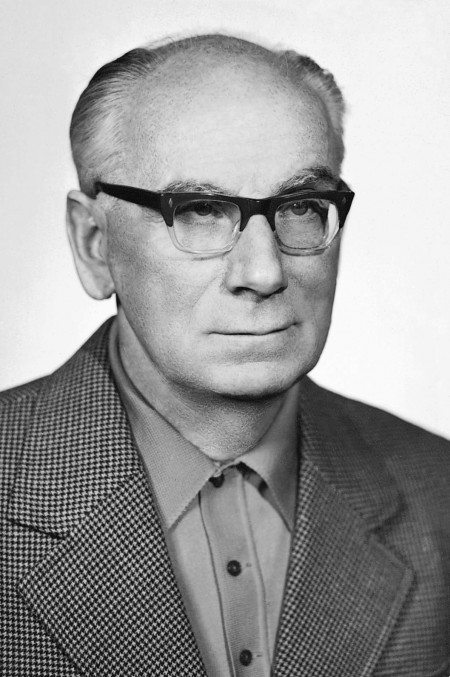
24 April 1905, Budapest – 4 June 1979, Budapest
Frigyes Sándor violinist, conductor and professor of violin was born as the third child of a civil family. All three children chose music as a career and gained considerable success in that.
Frigyes Sándor began to learn to play the violin as a child at the Academy of Music already, opposite to his two siblings learning the piano. He got to the class of József Bloch the famous leader of the violin teachers' training institute at the age of ten, where he spent three academic years (from 1915 to 1918). Between 1919 and 1925 he pursued his studies with Gyula Mambriny - a student of Hubay, at the Academy - and the first class of the teachers' training institute. He completed his studies under the guidance of Rezső Kemény renowned at that time. He studied string quartet as a student of Imre Waldbauer.
The first important station of his instrumental career is his work as the first violinist of the Budapesti Ének- és Zenekaregyesület (Choral and Orchestral Association of Budapest) between 1926 and 1933. The association operating by the leadership of Emil Lichtenberg, a conductor and coach at the opera, was one of the firm pillars of Hungarian oratorical culture. Frigyes Sándor gained experiences and knowledge of style and repertoire during the rehearsals and performances that defined his career. The period spent with regular work in the ensemble was terminated by the writer's cramp, an illness that severely impeded the movements of his hand and changed his entire life.
His activities as a violinist were replaced by his work as a conductor that time. He led different casual and permanent ensembles - with constant composition over a longer period of time - in the 1930s and 1940s. A part of these could get stage performances only by the National Hungarian Jewish Cultural Association from 1939 on, though it also meant that at the concerts in the famous Goldmark Hall Frigyes Sándor could work with several of the excellent personalities of Hungarian artistic life. The most significant event of his early conducting activities happened at that time: he conducted the premiere of Bartók's Divertimento in 1941 in Budapest. (The Hungarian premiere was held at Kolozsvár temporarily reattached to Hungary at that time, with Viktor Vaszy conducting also in 1941.)
He got married with Vera Dénes (1915-1970) cellist on 10 July, 1940. His artistic activities in the 1940s were ended by the labor service.
Following the end of World War II Frigyes Sándor received significant tasks as a conductor in the resurging concert life of the capital (leading the Székesfővárosi Zenekar, Orchestra of the Capital), and became a teacher of the Music School Organization of the Capital just founded then and of the re-started Nemzeti Zenede (Music Secondary School) where he taught violin and chamber music. The new pedagogical trends that emerged by the new social conditions claimed new manuals of instrument teaching with progressive methods. Frigyes Sándor was commissioned to work on a violin method score with new approach by the publisher Cserépfalvi with composer partners Pál Járdányi and Endre Szervánszky. The first volume of Hegedű ABC (Violin ABC) that broke radically with the past educational methods, based on Hungarian folk music and classical music literature instead of ‘study pieces', was published in 1949 and was followed by further ones (vol. 1-5), becoming the basis for violin instruction for a long time. (The Violin ABC has repeatedly issued and used in many countries around the world since then.)
Frigyes Sándor was entrusted with the leading of the Bartók Béla Secondary School of Music formed by the union of the former Conservatory and the Nemzeti Zenede [Music Secondary School]. The training of primary level music school teachers began within the school (initially with the name specialized teachers' education); it became later the task of the Teachers' Training Institute of the Academy. Frigyes Sándor taught chamber music and led the ensembles of the institution besides his work as director from 1949 to 1958.
Following the end of his director's mandate he continued his work as a professor of chamber music from 1958 at the Liszt Ferenc Academy of Music. There he came into contact with students pursuing higher level studies, a team of whom invited him in 1963 to lead a chamber orchestra of them playing together regularly for a while. The model of the chamber orchestra was confessedly the ensemble of I Musici di Roma that had been operating for only a few years then, though the new Hungarian ensemble could captivate a broader repertoire (Bach: Die Kunst der Fuge, works of Stravinsky, Honegger, etc.) than that of the world famous Italian one, owing to the guidance of the conductor. The orchestra performed under the name The Chamber Orchestra of the Liszt Ferenc Academy of Music for a few years and then they took the name Liszt Ferenc Chamber Orchestra, referring to the Alma Mater. The biography of Frigyes Sándor is inseparable from the history of the Liszt Ferenc Chamber Orchestra just as the way of the Liszt Ferenc Chamber Orchestra is inseparable from the personality of Frigyes Sándor.
Frigyes Sándor retired from his position at the Academy in the academic year of 1974/1975; despite of that he still gave a significant part of his lessons for long years. A worsening illness made his work as a pedagogue and ensemble leader more and more difficult a few years later. After years of struggling with the disease he died in June of 1979.
Sz. A.


